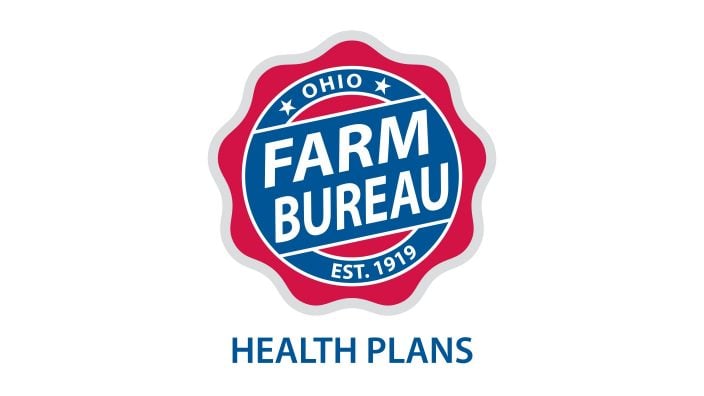Applications for Ohio Farm Bureau Health Plans now available
Members have three ways to apply: contacting a certified agent, calling 833-468-4280 or visiting ohiofarmbureauhealthplans.org.
Read More Just before 8 a.m., the school buses rumble into the quiet Noble County parking lot. The elementary school students race to the cafeteria, dropping their backpacks on a table. Looking over the breakfast options, they quickly decide what will satisfy their grumbling stomachs. The choices today vary from a hot breakfast pizza to yogurt to muffins.
Just before 8 a.m., the school buses rumble into the quiet Noble County parking lot. The elementary school students race to the cafeteria, dropping their backpacks on a table. Looking over the breakfast options, they quickly decide what will satisfy their grumbling stomachs. The choices today vary from a hot breakfast pizza to yogurt to muffins.
Shenandoah Elementary School student Jonathon Oakey chooses an egg sandwich, saying he’s hungry after traveling about an hour on the bus. “I love it,” the kindergartener excitedly says about his hot meal. The staff are equally excited. Ever since the southeast Ohio school district started offering breakfast, teachers have seen students go from drowsy and cranky to alert and eager to learn. Gone are the days of teachers and nurses pulling crackers and other food out of their drawers to help students from low-income families tame their hunger. For some students, lunch used to be their first meal of the day. That’s when they could get a free or reduced-cost meal (no more than 40 cents) as part of the National School Lunch Program, a federally assisted program that dates back to 1946.
Now those same students can enjoy a free or low-cost breakfast, thanks to the efforts of Children’s Hunger Alliance, a statewide advocacy group that works to ensure all children have access to regular and nutritious meals. Over the past few years, the agency has been reaching out to school districts to assist them with starting or expanding a School Breakfast Program. It’s one of several child nutrition programs, including the lunch program, sponsored by the U.S. Department of Agriculture and administered by the Ohio Department of Education. School districts receive cash subsidies for each healthy meal or snack served to low-income students. Congress determines the amount of funding for the programs.
More than 25 million students in over 90,000 schools and agencies nationwide participate in child nutrition programs, making them one of the nation’s largest food service operations, according to the Ohio Department of Education. Ohio’s food service programs serve more than 1 million meals daily at over 4,000 sites.
Nationally, only about 1 in 4 children eat breakfast at school. The American Dairy Association Mideast is part of an effort to increase that number. Together with the NFL and the National Dairy Council, they created Fuel Up to Play 60, a national health and wellness initiative that encourages students to eat healthy, including breakfast, and be physically active for at least 60 minutes every day. ADA Mideast partners with the Cleveland Browns and Cincinnati Bengals to implement the health and wellness program in 3,600 schools in Ohio and West Virginia.
Through the program, ADA Mideast has provided a total of $1.65 million in grants to schools in Ohio and West Virginia to help them add new dairy friendly items to their menus and purchase equipment such as mobile serving carts, smoothie stations and breakfast bars. The funding came from dairy farmers in those two states.
“Schools that we provided grants to last year saw their milk and yogurt sales increase, meaning healthier products were being consumed more,” said Jenny Hubble, ADA Mideast’s senior vice president of communications.
More than 11 years ago, ADA Mideast provided portable milk coolers to Shenandoah Elementary as it started what would become the first school breakfast program in southeastern Ohio, according to Charlie Kozlesky, formerly the school’s principal and now a consultant for the Children’s Hunger Alliance. At the time, the school district was looking at laying off two cooks to deal with a $40,000 deficit. Since the food preparation labor was already in place, starting up the breakfast program made sense because it would bring in much needed revenue and feed low-income students.
“The teachers said ‘Our kids are hungry. They’re on the bus up to 1 ½ hours and we need to feed them,’” Kozlesky said.

The breakfast program started small and simple. It was initially only offered in grades K-4 in the classroom with items like cereal and pastries. Later it was expanded to 5th and 6th grades in the cafeteria and grades 7-8 participated in “Grab and Go,” where they grab what they want to eat from a cart or kiosk in the hallway or cafeteria to eat in the classroom. Within three months, the school district was serving breakfast to 750 kids a day and was able to save the two cooks their jobs. The difference between what the district received in meal reimbursements from the federal government and the cost of the meals helped cover labor costs.
“Back then they got about $1.45 (in reimbursement) for every free meal and their costs were about 80 cents. Their lunch numbers also increased and they became financially sound,” Kozlesky said.
Today, Noble Local School District offers hot and cold breakfast for all grades, including high school where it’s available until 10 a.m. Now about 85 percent of students eat breakfast in school, giving them a healthy start to their day.
“There’s nothing more miserable than being hungry, which makes starting off with breakfast so critical,” Superintendent Dan Leffingwell said. “For some kids, this is possibly the only place where they get two meals a day.”
Notes:
The U.S. Department of Agriculture has set a goal of serving more than 200 million free meals this summer to children age 18 and under in affordable housing communities. This initiative will help reach children who rely on free meals during the school year, but who can be left hungry in the summer.
What is the Child Nutrition and WIC Reauthorization Act?
Every five years Congress reviews the laws governing federal school meal and child nutrition programs as well as sets funding levels. These programs aim to ensure low-income children have access to healthy and nutritious foods. Programs permanently authorized include the School Breakfast Program, National School Lunch Program, Child and Adult Care Food Program, Summer Food Service Program and Special Milk Program.
Source: Food Research & Action Center
Breakfast benefits
It improves:
Attendance
Behavior
Classroom participation
Attentiveness
Concentration
Math and reading scores
Standardized test scores
Cognitive test speed
Vocabulary
It Decreases:
Anxiety
School nurse visits
Tardiness
Absenteeism
Sources: Children’s Hunger Alliance, Food Action & Research Center, GENYOUth Foundation
Photos by Dave Liggett


Members have three ways to apply: contacting a certified agent, calling 833-468-4280 or visiting ohiofarmbureauhealthplans.org.
Read More

One of the best decisions Shannon and Heather Utter made a few years ago was looking into a Farm Bureau member benefit that has ended up saving them thousands of dollars on their energy bills.
Read More

Ryan Hiser has experienced first-hand the importance of having the opportunity to vote on issues that will affect his family operation and other farmers.
Read More

Bill Patterson, Cy Prettyman and Adele Flynn will continue to serve as officers for Ohio Farm Bureau Federation.
Read More

Delegates discussed many topics impacting agriculture including farmland preservation, local foods, and succession planning.
Read More

Twenty-six farmers govern the state’s largest farm and food organization.
Read More

The 2025 recipients are Fred Cooke (posthumous) of Richland County, Marvin Dietsch of Williams County, Steven Knollman of Hamilton County and Michele Miller (posthumous) of Ottawa County.
Read More

Nathan and Jill Parriman grow seasonal crops, including Christmas trees, pumpkins and cut flowers, providing U-cut experiences that invite customers to engage directly with agriculture.
Read More

The 2025 Distinguished Service Award recipients are Craig Adams, Mike Townsley, and Kellogg Farms, Kurt Farms and Stateler Family Farms.
Read More

Ohio Farm Bureau Treasurer Adele Flynn participated in the meeting, representing Ohio farmers.
Read More